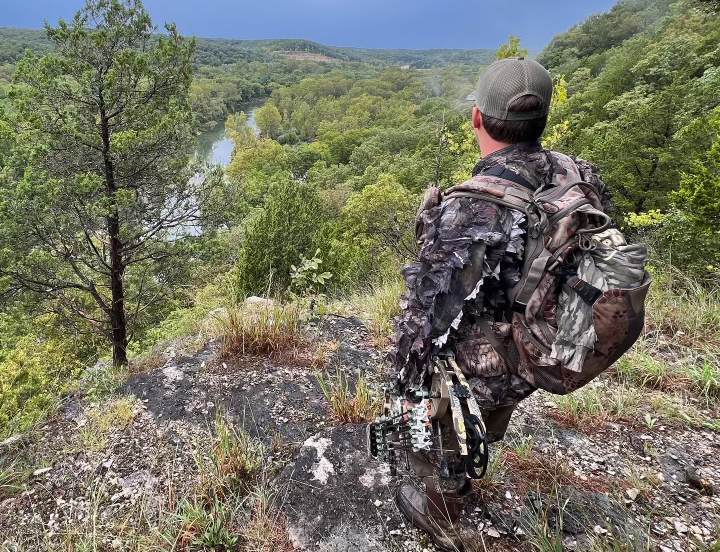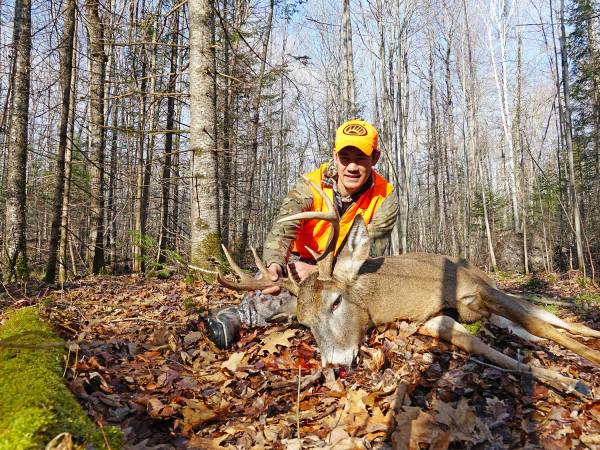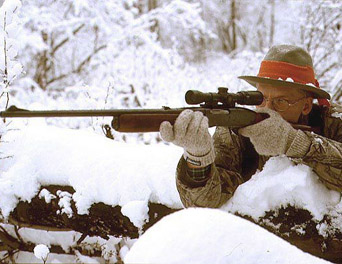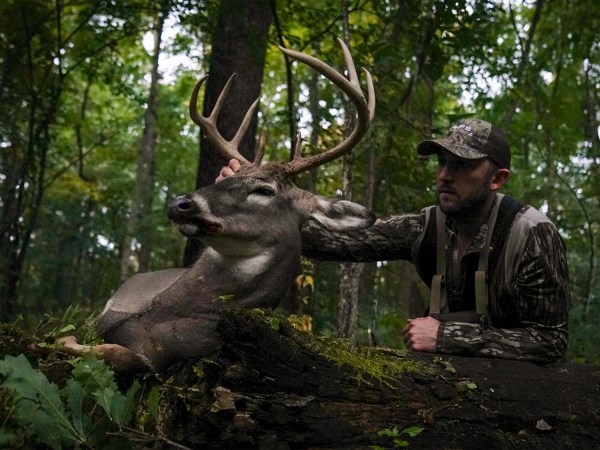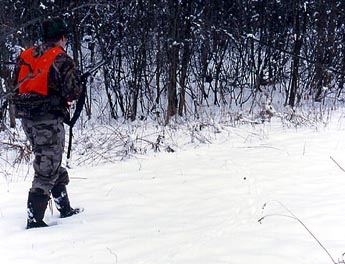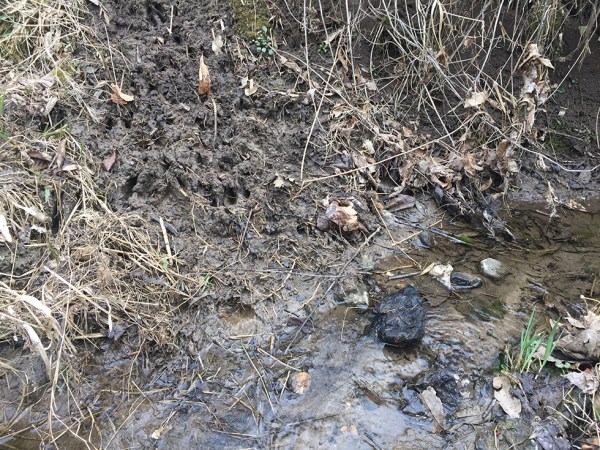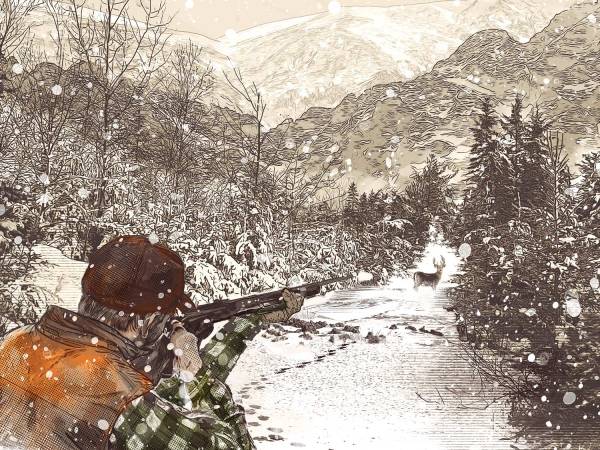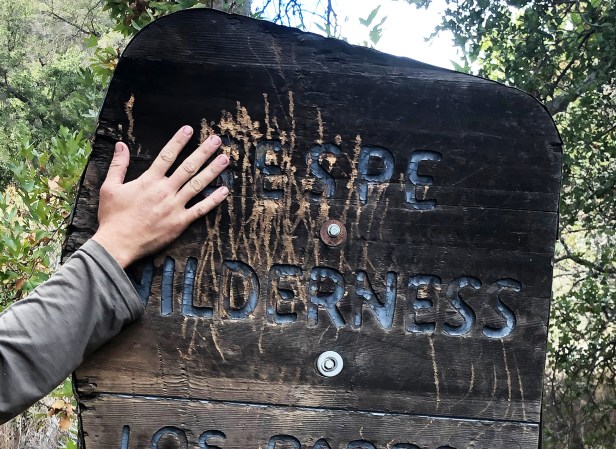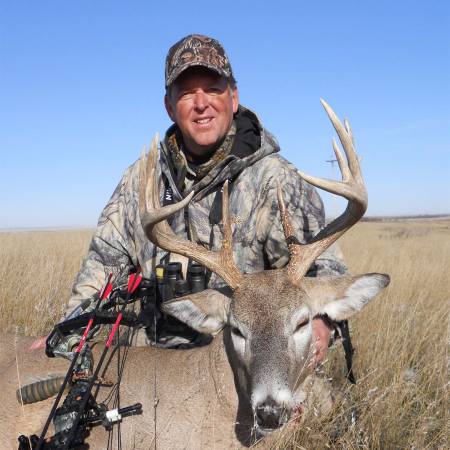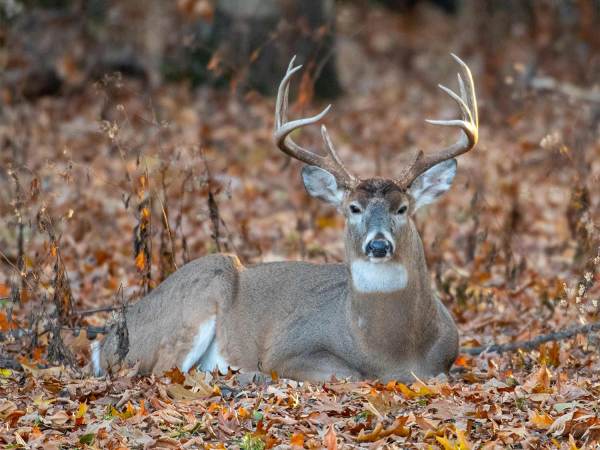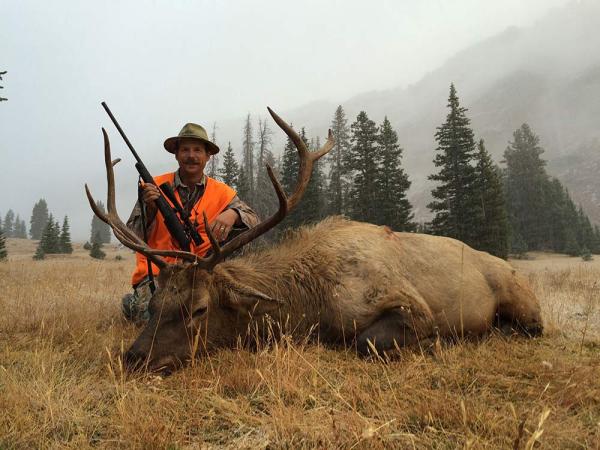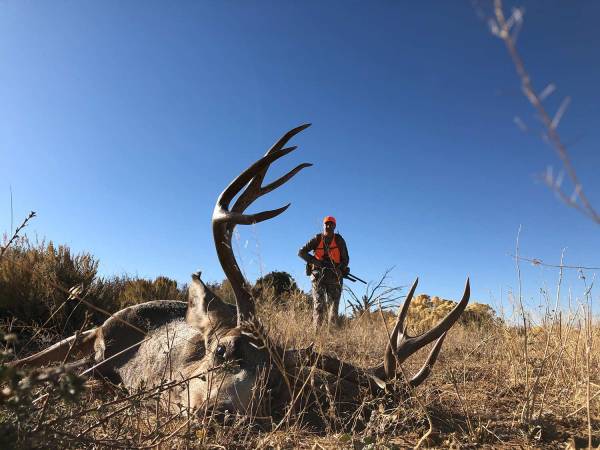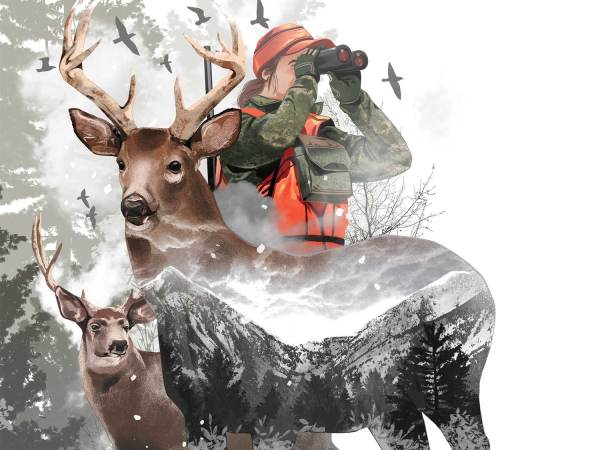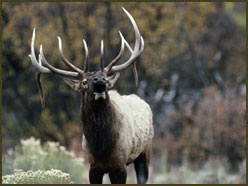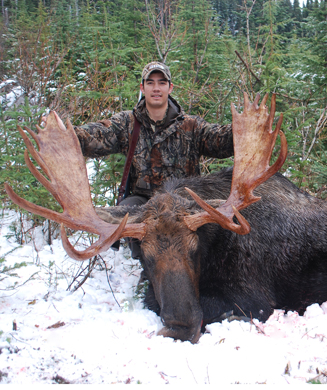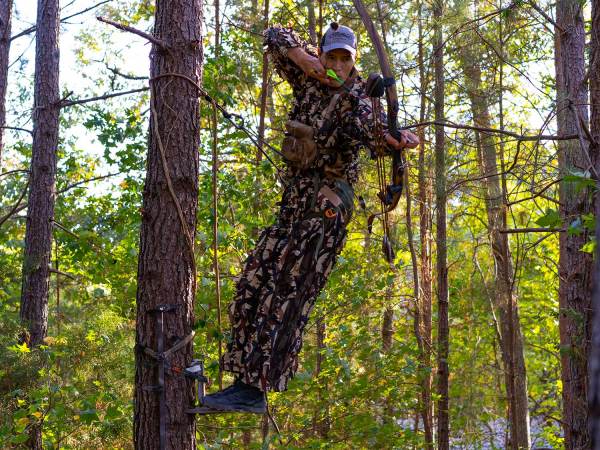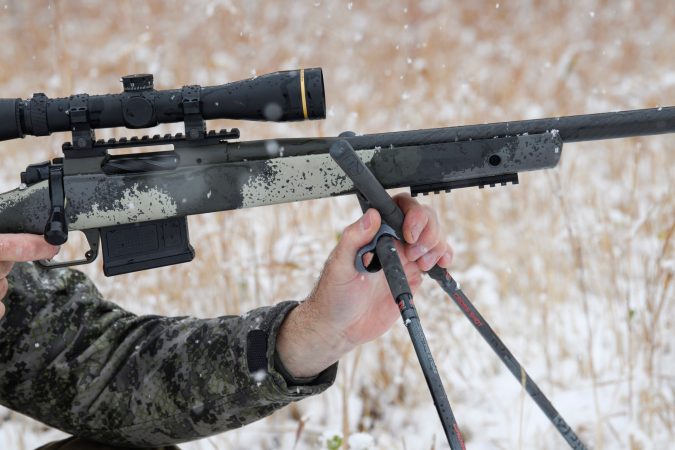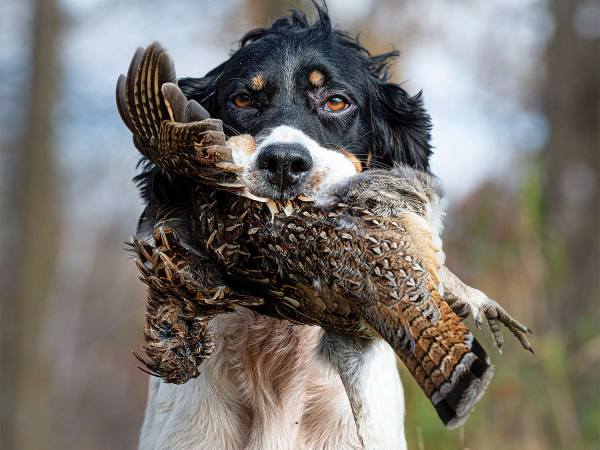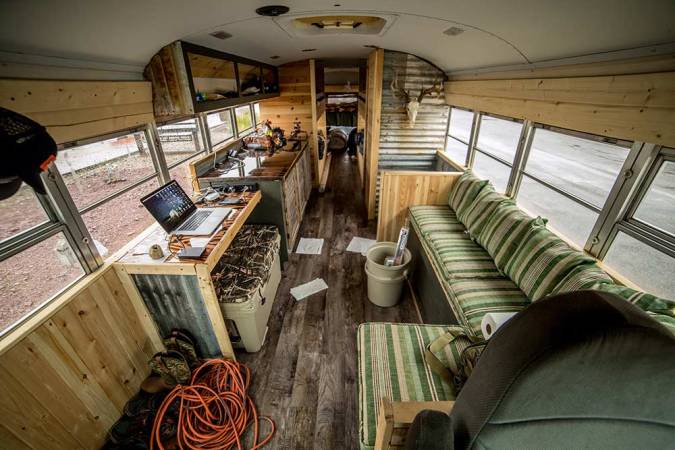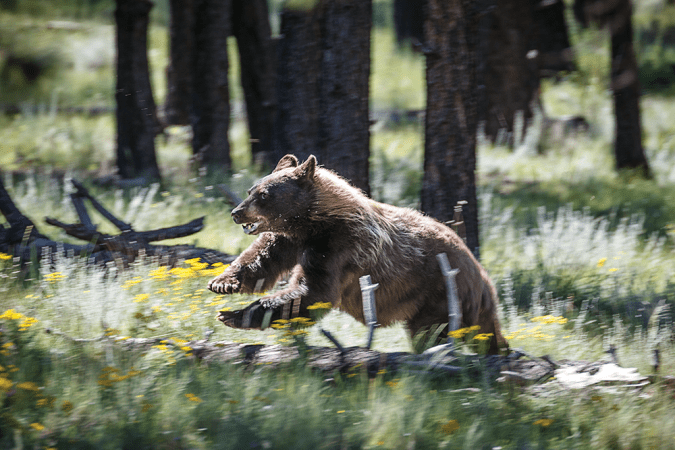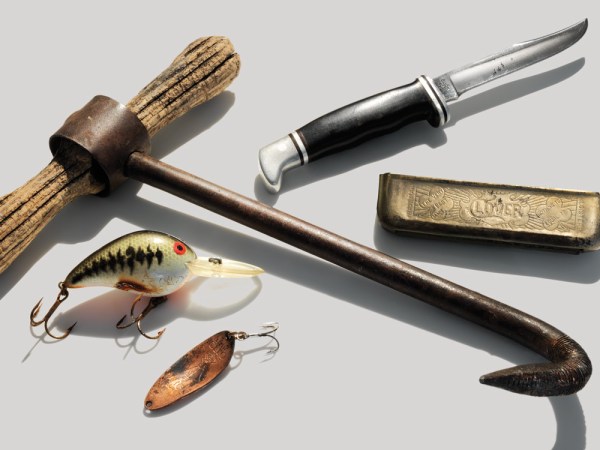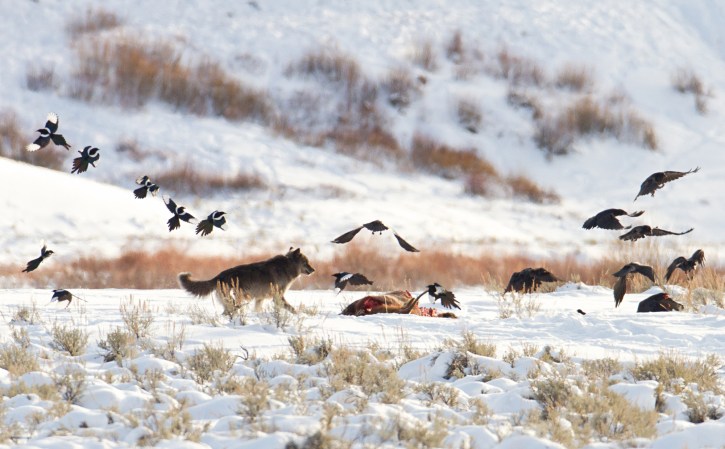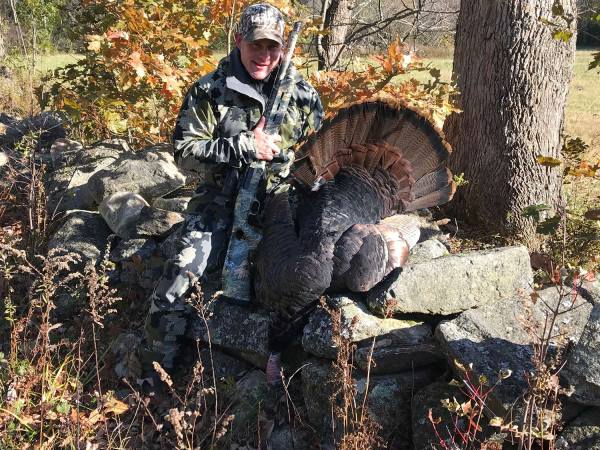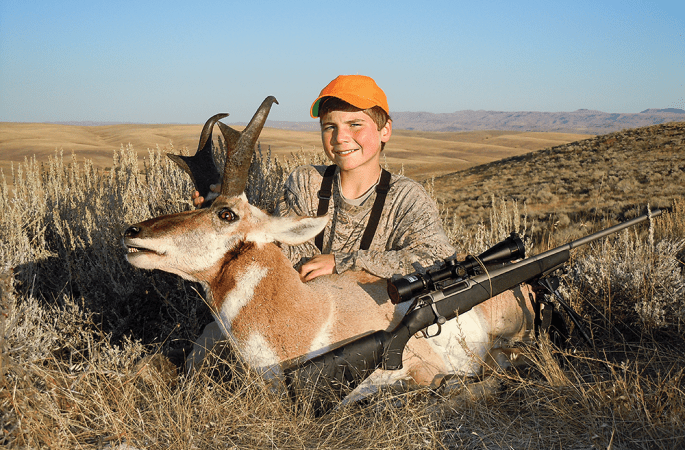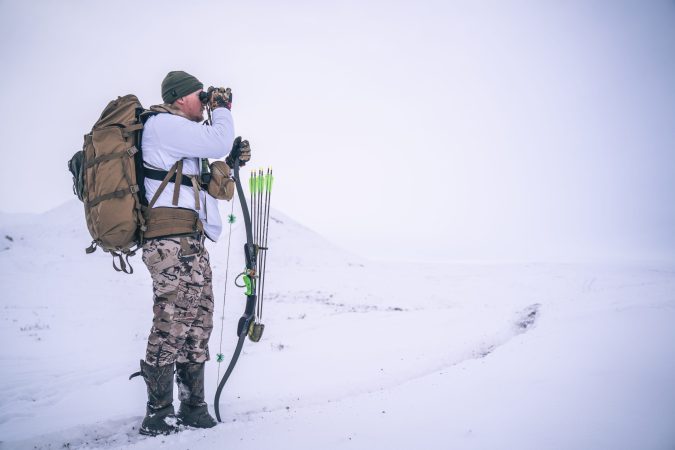For the fourth stop of The Hunting Public’s Deer Tour, Keith Robinson and Nick Andrews set out for Missouri to chase early-October whitetails on public land with their bows. Robinson and Andrews were traveling with two cameramen, Ted Zangerle and Aaron Warbritton. The crew arrived in Missouri without any knowledge of the area other than what they could glean from scouting online. With the season already underway, their plan was to hunt main ridges and focus on the white oak flats spread along these high points.
But their hunt was overshadowed by a crazy experience that Andrews and Zangerle had on their last sit. If you spent a lot of time hunting public land, you’ve probably had some crazy or even frightening encounters. So before we get into hunting tips, we will dive into that hair-raising event.
Dealing With Gunshots & Blood Curdling Screams
On the last evening of their hunt in Missouri, Andrews felt as confident as he had been the entire trip. Andrews is from Texas, and this was his first time hunting out-of-state. However, hunting with Zangerle (an experienced traveling hunter) as his cameraman had given Andrews the unique opportunity to learn a lot about hunting timber in rolling hills in a very efficient manner.
As Andrews settled into his saddle setup overlooking a feed tree and three scrapes that were completely torn up, he felt like the odds were working in his favor.
“I told Ted, my hands were clammy, I felt like something was about to happen,” says Andrews.
Right around 6:45 p.m., primetime in the deer woods, they suddenly heard five gunshots ring out from the private property a few hundred yards away. Then they heard someone let out a bone chilling scream. The commotion lasted about 30 minutes.
“We could hear someone yelling, alongside the screams, but we couldn’t make out the words,” Andrews says. “Then there was another gunshot followed by more bone chilling screams.”
As this went on, Andrews and Zangerle tried to contact the authorities in the area, but were unable due to a lack of cell service. While they were trying to get service, another 18 gunshots rang out and the screaming continued.
“It sounded like something out of a horror movie,” says Andrews. “It was extremely unsettling, and we did not feel safe at all.”
After a little while, they heard a truck tear out and start speeding down a gravel road, it then stopped at the bottom of the ridge that Andrews was hunting, about 200 yards away.
“We got down with a lot of light left when we heard that, we just felt too uncomfortable. We were trying to call the cops and get a hold of whoever we needed to so someone could go in and check that whole situation out,” says Andrews.
Eventually they did make contact with authorities, but the police were not able to find any evidence of wrongdoing. Did they actually hear a shooting? Was it someone just trying to mess with them? They’ll never know for sure, but the lesson here for Andrews and Zangerle was simple: always have a contact for worst-case scenarios like this. Know who you’re going to call and how you’re going to contact them if something goes bad in the woods.
You can listen to the audio of the encounter for yourself below (viewer discretion advised).

Cover Ground in New Areas
As for the hunt itself, the crew had never been to this area of Missouri, so when they arrived to hunt, they developed a plan to run as many ridges as they could to spots with high deer density. Robinson grew up hunting in southern Ohio, so he was more familiar with hunting this type of terrain. They had noticed on their drive that the creek bottoms were mostly dry, so they chose to not focus on those areas.
In new areas, the plan is to cover ground until they have a handful of spots they’re confident in. Core areas, feeding sign, bedding areas around that sign, anything they think is a good indication that deer are actively in the area. They always have multiple spots to hunt based on wind directions. In essence, they will still hunt into the area, find sign, and hunt fresh zones that haven’t been hunted yet.
“We found a lot of big white oak covered ridge tops the first day,” says Robinson. “The white oaks seem to have the best acorn crop this year, some black oaks were also dropping a decent amount, but we know the deer prefer white oak acorns, so that’s where we decided to spend the majority of our time.”
The white oaks with a good crop seemed to be pocketed among the big main ridges. To find them, the crew just kept hiking and looking for feeding signs. By the afternoon of their first day, Robinson had located an area with rubs and plenty of feeding sign in a white oak flat.
He and Warbritton set up nearby for their evening hunt and had a doe and a buck come in, close to last light, but a swirling wind sent the deer fleeing.
“Ideally we don’t like to bump deer with the wind, but if we’re going to bump deer, bumping them near a bunch of fresh sign gives us confidence that they’ll eventually venture back into those areas,” Robinson says.
While Robinson and Warbritton wanted to get back into that area the next morning, the wind had other plans. It was projected to push their scent right into the core areas they had found the day prior, so they chose to target a different ridge and to still hunt and scout that morning. On another ridge nearby, Andrews and Zangerle were struggling to find fresh sign. They stayed persistent and kept covering ground throughout the middle of the day and that afternoon, they stumbled upon a feed tree loaded with fresh droppings and acorns galore.
As Andrews set up for his evening hunt, Robinson had returned to the white oak covered ridge from the day before. He chose to set up on the main ridge overlooking the white oak flat with a deer trail that went down into a creek system nearby. That evening, a doe read the playbook and came right down the trail into bow range.
Shot Awareness and Shooting Lanes Matter

“The tree we were saddle hunting in had me in a spot that when the time came to shoot, I wanted to be lower than I was while in my monitoring position,” says Robinson. “My plan was to lower myself as a deer came in and get in a better shooting position.”
Unfortunately, that plan didn’t come to fruition. Robinson had the doe slip in and surprise him, so he was unable to lower himself with the doe now in bow range.
“I had to shoot how I was. I drew back and stopped her, but my limb was touching a branch, so I knew I couldn’t let off the shot. I ended up leaning back to get my limb off of the branch, but when I shot, my cam rolled over and hit the branch.”
Robinson ended up hitting the doe high and needed a follow up shot. They recovered the deer, but Robinson didn’t make as good of an initial shot as he wanted. The lesson here is to always be aware of your shooting lanes. Practice drawing and moving into those shooting lanes once you’re set up in a tree. This will help you realize where you can and can’t shoot.
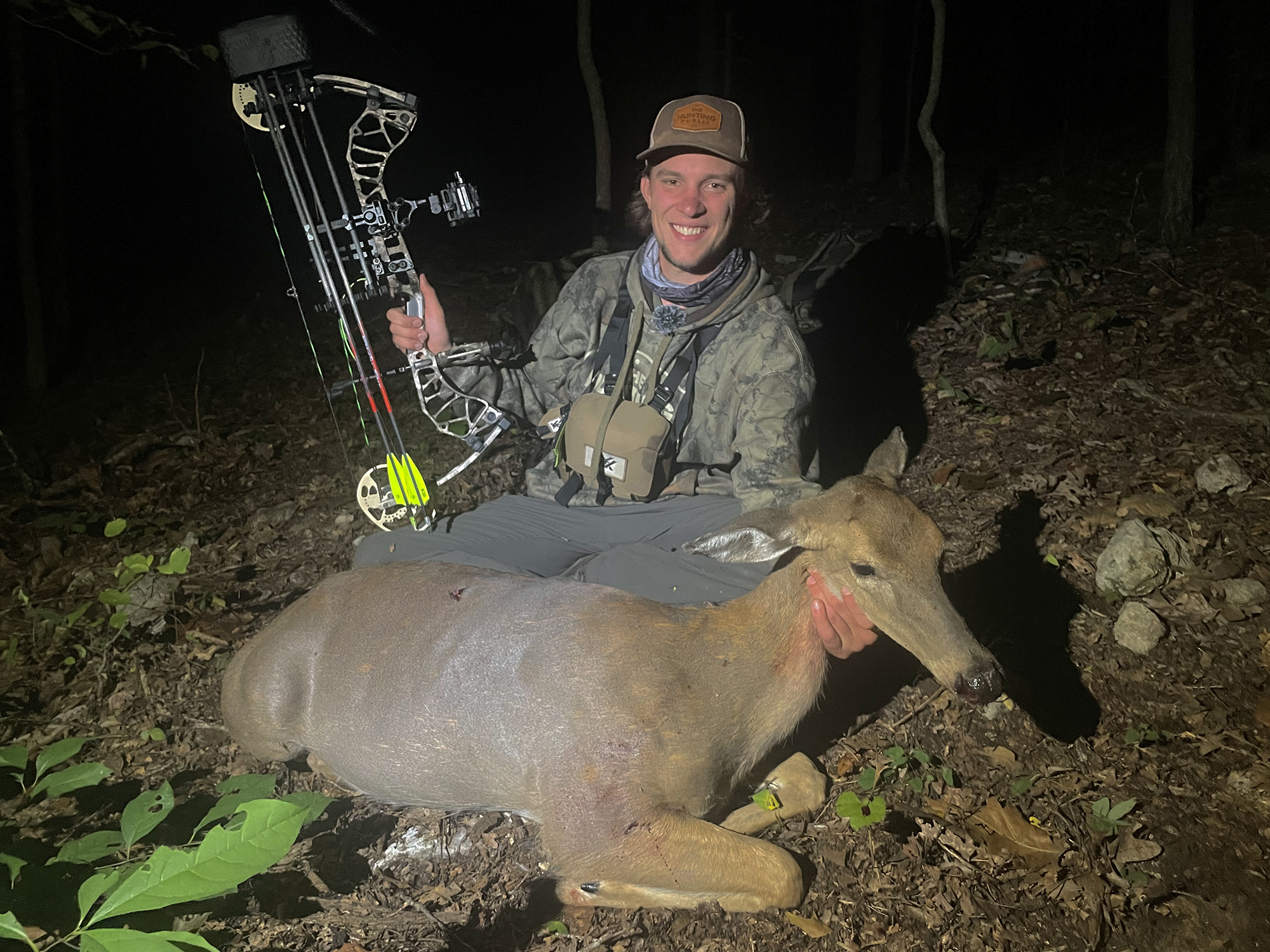
“I did take my practice draw, but I was lower on my tether rope when I did it. I should have practiced upright in my observation post too. When you’re in your set up, draw into every possible shooting lane you can imagine. Don’t get lazy, take a couple seconds to draw your bow and realize what could be in the way,” says Robinson.
Hunt the Fresh Sign
Heading into the third and fourth day of the hunt, Robinson’s plan was to target the secondary ridges to see if he could get closer to the bedding areas and come across a mature buck. Andrews on the other hand, was staying on the main ridges focused on finding the freshest feed tree possible.
As Andrews entered the woods that morning, he saw lots of sign right next to his parking area, but decided to push deeper into the timber. Something he would later regret. He and Zangerle still hunted and scouted for the majority of the day, but in the evening as they were headed back to their parking spot, the sign they had seen that morning had fresh droppings. Andrews hopped up on his platform quickly and within five minutes had a doe feeding toward him.
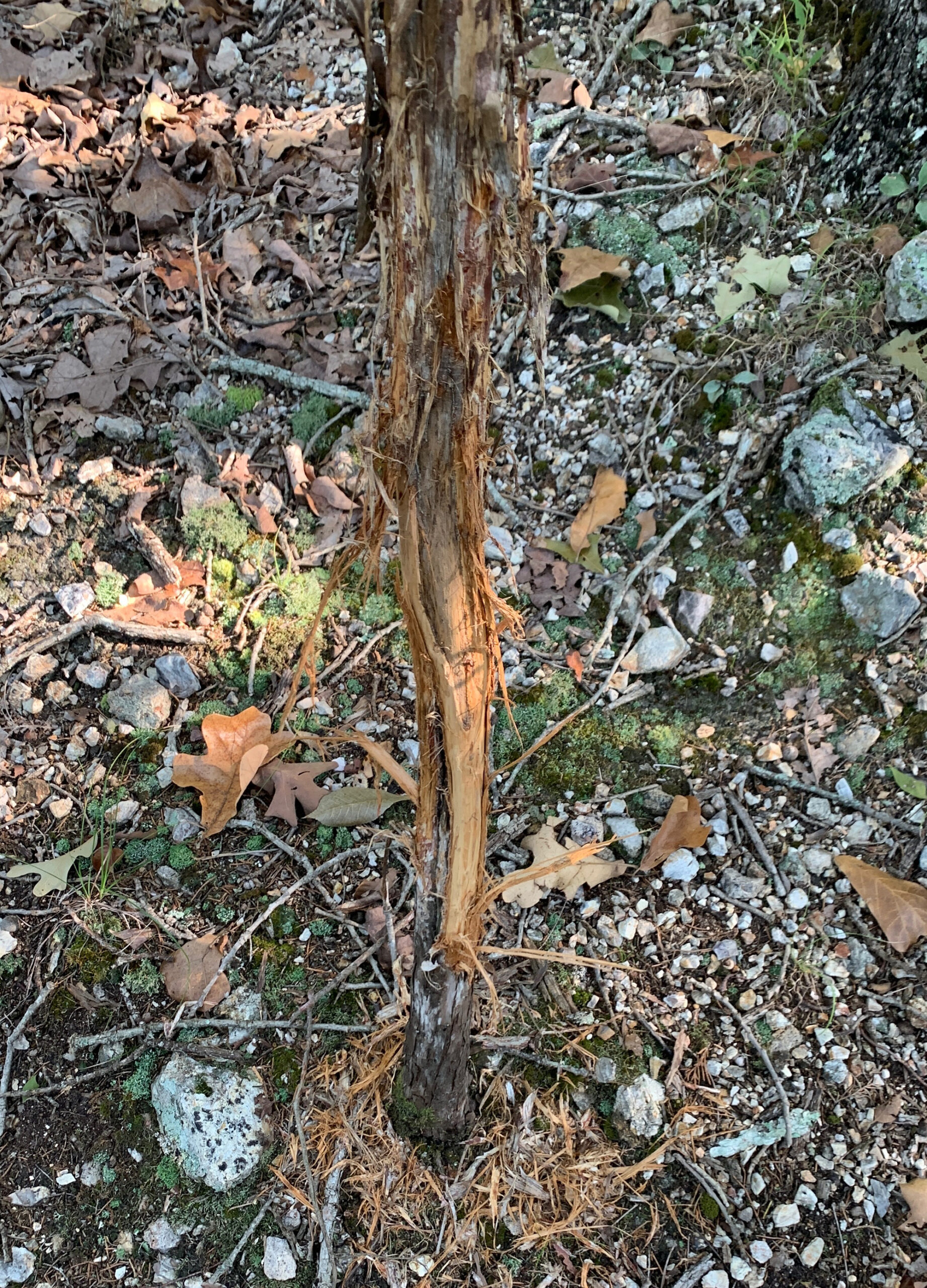
Unfortunately, because of the quick set up, he didn’t have enough cover and the doe spotted him and busted out of the area. Failure to pay attention to the sign cost him the opportunity.
“We should have made a better setup that evening, but we were losing light fast and there wasn’t ground cover to get behind,” says Andrews. “With time running out so fast, we should have pushed back to the truck and come back the next morning to set up. We threw a last-second hail mary and it didn’t work out.”
It ended up being a hard learned lesson for the Texan. If you find fresh sign, hunt it. Even if it goes against your original gameplan. And If that means hunting 50-yards from the truck, then so be it.
The next time you find fresh sign, Andrews wants you to remember: “Get it while the gettin’s good.”

